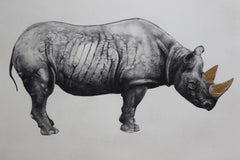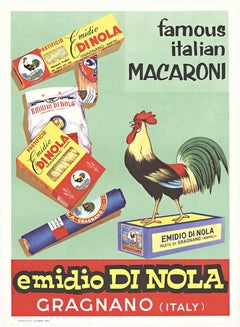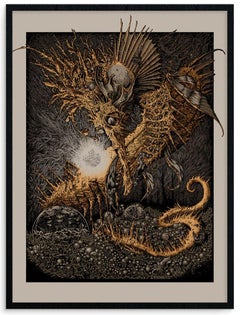Tammy Mackay Still-life Prints
British
Tammy Mackay works are available to buy with Wychwood art online and in our art gallery. Tammy Mackay's Dodo work and other works are available for sale online and in our art gallery but do call us to double check . Tammy Mackay comments "I have always had a passion for printmaking, which has always been my main form of expression. Although I have used etching and monoprint as my primary mediums, I have always experimented with new techniques. More recently I have used photopolymer plates and drypoint. These techniques are often combined with hand drawn or hand coloured chine collé. Exploring and developing new techniques opens up new possibilities which I feel is essential to my development as an artist and printmaker. Tammy Mackay's most recent body of work is entitled Love [loss] and Identity. This series has been a personal exploration of these themes. A journey of feelings often linked to an object, moment or past memory. Images have become both layered in process and layered in meaning. Animals and birds have become central to the theme and convey a subtle symbolism within their depiction. “Those Lost Forever” exhibited at the Royal Academy Summer Exhibition 2013 and “Gone but not Forgotten” exhibited in this year’s show are both from this series. I grew up on a farm in the Eastern Cape of South Africato
1
Overall Width
to
Overall Height
to
9
95
71
65
43
1
1
1
1
1
1
1
1
1
1
Artist: Tammy Mackay
Rhinoceros (State II), Wild Animal Art, Realist Art, Black white and gold art
By Tammy Mackay
Located in Deddington, GB
RHINOCEROS (state II) by Tammy Maclay.
Edition of 20.
Photopolymer print with hand painted gold detail.
22.2 H x 29.5 W (inches)
56.4 H x 75 W (CM)
Dürer’s iconic Rhinoceros print w...
Category
21st Century and Contemporary Realist Tammy Mackay Still-life Prints
Materials
Metal
Related Items
Original Italian Emidio di Nola Italian Macaroni original vintage food poster
Located in Spokane, WA
Emidio di Nola, original Italian pasta poster. Size 19" x 25.5". Professional acid-free archival linen-backed; in excellent condition; ready to frame....
Category
1950s Aesthetic Movement Tammy Mackay Still-life Prints
Materials
Lithograph
$750
H 25.5 in W 19 in D 0.05 in
The Celestial Hippocampus (Ed. 88/140)
Located in Dallas, TX
"The Scar by China Miéville is a novel which has been a part of my life for many years, and has travelled as my companion through since adolescence. I've attempted to depict the Avan...
Category
21st Century and Contemporary Surrealist Tammy Mackay Still-life Prints
Materials
Screen
"Carrier Pigeon" Signed Limited Edition Black and White Silkscreen Print
Located in East Quogue, NY
“Carrier Pigeon,” 2012, Limited edition silkscreen print by Baltimore street artist Gaia.
Three-color hand-pulled silkscreen on Coventry Rag, 100% Cotton Archival Paper. Edition 25/...
Category
2010s Contemporary Tammy Mackay Still-life Prints
Materials
Archival Paper, Black and White, Archival Pigment
After Harnett
Located in Red Bank, NJ
After Harnett by Kimberly Witham
Print, Animal, Still-Life, Bird, Gothic, Dark Colors, Textured
Category
20th Century Gothic Tammy Mackay Still-life Prints
Materials
Rag Paper, Archival Pigment
Frogs and Toad, Signed lithograph (AP), from Conspiracy: The Artist as Witness
By Jack Beal
Located in New York, NY
Jack Beal
Frogs and Toad, 1971
Hand signed in pencil by Jack Beal, annotated AP
One-color lithograph proofed by hand and pulled by machine from a zinc plate on Arches buff paper with deckled edges at the Shorewood Bank Street Atelier
Stamped, hand numbered AP, aside from the regular edition of 150 Stamped on reverse: COPYRIGHT © 1971 BY JACK BEAL, bears blind stamp
18 × 24 inches
Unframed
18 x 24 inches
Stamped on reverse: COPYRIGHT © 1971 BY JACK BEAL, bears distinctive blind stamp of publisher (shown) Publisher: David Godine, Center for Constitutional Rights, Washington, D.C.
Jack Beal's "Frogs and Toads" is a classic example of protest art from the early 1970s - the most influential era until today. This historic graphic was created for the legendary portfolio "CONSPIRACY: the Artist as Witness", to raise money for the legal defense of the Chicago 8 - a group of anti-Vietnam War activists indicted by President Nixon's Attorney General John Mitchell for conspiring to riot during the 1968 Democratic National Convention. (1968 was also the year Bobby Kennedy was killed and American casualties in Vietnam exceeded 30,000.) The eight demonstrators included Abbie Hoffman, Jerry Rubin, David Dellinger, Tom Hayden, Rennie Davis, John Froines, Lee Weiner, and Bobby Seale. (The eighth activist, Bobby Seale, was severed from the case and sentenced to four years for contempt after being handcuffed, shackled to a chair and gagged.) Although Abbie Hoffman would later joke that these radicals couldn't even agree on lunch, the jury convicted them of conspiracy, with one juror proclaiming the demonstrators "should have been shot down by the police." All of the convictions were ultimately overturned by the 7th Circuit Court of Appeals.
This lithograph has fine provenance: it comes directly from the original Portfolio: "Conspiracy The Artist as Witness" which also featured works by Alexander Calder, Nancy Spero and Leon Golub, Romare Bearden Sol Lewitt, Robert Morris, Claes Oldenburg, Larry Poons, Peter Saul, Raphael Soyer and Frank Stella - as well as this one by Jack Beal. It was originally housed in an elegant cloth case, accompanied by a colophon page. This is the first time since 1971 that this important work has been removed from the original portfolio case for sale. It is becoming increasingly scarce because so many from this edition are in the permanent collections of major museums and institutions worldwide.
Jack Beal wrote a special message about this work on the Portfolio's colophon page. It says, "In 1956, shortly after Sondra and I moved to New York, two friends were arrested and jailed for protesting air-raid drills. From them and their friends came our education. This work is dedicated to them and their families. "In Memory of Patricia McClure Daw and AL Uhrie" - This print was made for their children.
Jack Beal Biography:
Early in his career Walter Henry “Jack” Beal Jr. painted abstract expressionist canvases, because he believed it was “the only valid way to paint.” By the early 1960s he totally altered his approach and fully repudiated abstraction. Turning to representation, he painted narrative and figurative subjects, often enhanced by bright colors and dramatic perspectives.
Beal was born in Richmond, Virginia, and from 1950 to 1953 he attended the Norfolk Division of William and Mary College Polytechnic Institute, (now Old Dominion University) where he studied biology and anatomy. Shifting gears, he sought art training at the School of the Art Institute of Chicago where he focused on drawing, and met his wife, artist Sondra Freckelton. His art history instructor encouraged her students to paint in the manner of established artists, and to that end he frequented the Institute’s galleries. For Beal this was significant: “Until I saw pictures of real quality I had tended to think of painting as just so much self-indulgent smearing around, but when I saw masterpieces by Cézanne and Matisse, and other painters of similar stature, I was bowled over; suddenly I realized the force of art.”
After spending three years (1953–1956) at the Art Institute, Beal concluded his studies there without getting a terminal degree, thinking it was only useful if he wanted to teach, which, at the time, he did not. He also took courses at the University of Chicago in 1955 and 1956. During this period he married Freckelton, a fellow student and sculptor who began her career working in wood and plastic. Together they moved to New York’s SoHo District before its transformation from a wasteland of sweatshops and small factories into an arts district. They were active with the Artist Tenants Association which was instrumental in getting zoning laws changed so that artists could live and work in the well-lit lofts.
Embracing what came to be called “New Realism,” Beal initially painted an occasional landscape as well as earthy-toned still lifes which consisted of jumbled collections filled with personal objects. His signature style started with a series of female nudes—all modeled by Freckelton—based on Greek mythology. These were large canvases with flat paint surfaces, dramatic foreshortening, and unusual perspectives. He further enlivened them with vivid colors, stark lighting, and dynamic patterns derived from textiles and overstuffed furniture. He stopped painting nudes after two episodes. The first came as he was loading a canvas of his naked wife onto a truck in lower Manhattan; several laborers walked by and started to fondle and kiss the painting. On the one hand he felt his wife had been violated, while on the other he was pleased that his realism was so convincing. The second occurred after a solo exhibition in Chicago at which the reception had been sponsored by Playboy magazine. A few days later he was approached by a publicist and asked if Playboy bunnies could be photographed in front of his paintings. He refused.
Some portrait commissions came Beal’s way, but he preferred only portraying friends. More significant were four large murals on the History of Labor in America, the 20th Century: Technology (1975), which he undertook for the headquarters of the United States Department of Labor in Washington. Following a historical timeline, the themes were: colonization, settlement, nineteenth century industry, and twentieth century technology. The unveiling ceremony was attended by government officials and Joan Mondale, an arts advocate and wife of the vice-president. The reviewer for the Washington Post wrote enthusiastically: “They’re heartfelt and they’re big (each is 12 feet square). Their many costumed actors (the Indian, the trapper, the scientist, the hardhat, the capitalist in striped pants, the union maid, etc.) strike dramatic poses in dramatic settings (a seaside wood at dawn, an outdoor blacksmith’s forge, a 19th-century mill, a 20th-century lab). The lighting is theatrical. Beal’s compositions, with their swooping curves and bunched diagonals, are as complicated as his interwoven plots.” To accomplish the murals Beal assembled a team of assistants and models, much in the manner of Renaissance masters, which included artist friends and Freckelton. who by then was painting brightly colorful still lifes.
A second mural commission ensued from New York City’s Metropolitan Transit Authority for two twenty-foot long installations for the Times Square Interborough Rapid Transit Company subway station. Beal’s designs for The Return of Spring (installed in 2001, three days after the terrorist attacks in New York, Washington, DC and Philadelphia) and The Onset of Winter (installed in 2005), Beal captured the appearance of his models in an oil painting made to the scale of the intended mosaic. A collaboration with Miotto Mosaics, the canvases were shipped to the Travisanutto Workshop, in Spilimbergo, Italy, where craftsmen fabricated the design to glass mosaics. The Return of Spring depicted construction workers and other New Yorkers in front of a subway kiosk and an outdoor produce market and in The Onset of Winter, a crowd watches a film crew recording a woman entering the subway as snow falls against the city’s skyline. Harkening back to some of his early nudes based on Greek myth, Persephone, goddess of fertility and wife of Hades, appears in both. The symbolism is pertinent, since she spent six months each year below ground.
Although he disparaged teaching early on, Beal and Freckelton offered four summertime workshops on their farm in Oneonta, New York. He was an instructor at the New York Academy of Art, a graduate art school he helped to establish in 1982. Returning to Virginia, he taught at Hollins College...
Category
1970s Realist Tammy Mackay Still-life Prints
Materials
Lithograph
'Fruit & Flowers Series' (Group of 10)
By Donald Sultan
Located in New York, NY
Donald Sultan’s 'Fruit & Flowers' series, created in the 1990s, is a lush and visually bold collection of screen prints that blends traditional still life motifs with a distinctly mo...
Category
1990s Abstract Expressionist Tammy Mackay Still-life Prints
Materials
Archival Paper, Screen
Tree with moth, caterpillar..., Plate 39, Metamorphosis Insectorum Surinamensium
By Maria Sibylla Merian
Located in Middletown, NY
Metamorphosis Insectorum Surinamensium, Plate No. 39; Unidentified tree with moth, caterpillar and pupa.
The Netherlands: 1705....
Category
Early 18th Century Naturalistic Tammy Mackay Still-life Prints
Materials
Watercolor, Engraving
Icecream Bean plant..., plate no. 58, Metamorphosis Insectorum Surinamensium
By Maria Sibylla Merian
Located in Middletown, NY
Metamorphosis Insectorum Surinamensium, Plate No. 58; Ice Cream Bean Plant, Cloudless Sulphur Butterfly and Caterpillar with Mot...
Category
Early 18th Century Naturalistic Tammy Mackay Still-life Prints
Materials
Watercolor, Engraving
$5,300
H 12.88 in W 9.63 in
Hermit Crabs, German animal antique underwater crustacean engraving print
Located in Melbourne, Victoria
'Einsiedlerkrebse'
(Hermit crabs)
German wood-engraving, circa 1895.
240mm by 155mm (sheet)
Category
Late 19th Century Naturalistic Tammy Mackay Still-life Prints
Materials
Engraving
$50
H 9.45 in W 6.11 in
Thistle and Moths, plate no. 6, Metamorphosis Insectorum Surinamensium
By Maria Sibylla Merian
Located in Middletown, NY
Metamorphosis Insectorum Surinamensium, Plate No. 6; Thistle and Moths. The Netherlands: 1705. Engraving with hand coloring in w...
Category
Early 18th Century Naturalistic Tammy Mackay Still-life Prints
Materials
Watercolor, Engraving
$5,300
H 12.88 in W 9.63 in
'Horse with Jugglers' 1965-
By Marino Marini
Located in Brooklyn, NY
Printed in 1965 by Franz Hanfstaengl in Munich, Germany. The Marini bears the printer's blind stamp just below the bottom left-hand corner of the image, which reads "Hansfstaengldru...
Category
1960s Contemporary Tammy Mackay Still-life Prints
Materials
Offset
Marc Chagall Still Life with Fruits 1957 Original Lithograph Mourlot 205
By Marc Chagall
Located in Eversholt, Bedfordshire
Surrealist composition with a dog, figure, cockerel floating above the still life
In a cream mount, visible sheet length 19.50cm, height 22.50cm
Within a black and silvered moulded ...
Category
1950s Modern Tammy Mackay Still-life Prints
Materials
Lithograph
$1,379
H 15.16 in W 13.19 in D 0.99 in
Tammy Mackay still-life prints for sale on 1stDibs.
Find a wide variety of authentic Tammy Mackay still-life prints available for sale on 1stDibs. You can also browse by medium to find art by Tammy Mackay in metal, paper, photogram and more. Not every interior allows for large Tammy Mackay still-life prints, so small editions measuring 30 inches across are available. Customers who are interested in this artist might also find the work of and Katsunori Hamanishi. Tammy Mackay still-life prints prices can differ depending upon medium, time period and other attributes. On 1stDibs, the price for these items starts at $546 and tops out at $546, while the average work can sell for $546.


